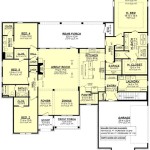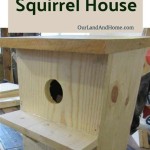Narrow houses, characterized by their elongated, thin shape and limited width, present unique challenges and opportunities in floor planning. Narrow houses floor plans are designed to maximize space utilization, enhance functionality, and create a comfortable living environment within the confines of a narrow structure.
One prominent example of narrow houses is the traditional Japanese townhouse known as a “machiya.” Machiyas are typically narrow and deep, with a width of around 5-6 meters. Their floor plans often incorporate clever space-saving features, such as sliding doors and built-in storage, to optimize space utilization and create a sense of spaciousness.
The unique challenges of narrow houses require careful planning and innovative design solutions. In the following sections, we will delve into the key considerations, layout strategies, and inspiring floor plan ideas for narrow houses to help you optimize space, enhance functionality, and create a comfortable living experience within the constraints of a narrow footprint.
When designing narrow houses, certain key considerations should be taken into account to optimize space and enhance functionality.
- Maximize vertical space
- Utilize natural light
- Create open floor plans
- Incorporate multi-purpose spaces
- Use built-in storage
- Choose narrow furniture
- Consider a mezzanine level
- Add skylights or clerestory windows
- Create a sense of flow
By carefully considering these factors, architects and homeowners can create comfortable and stylish living spaces within the constraints of a narrow house.
Maximize vertical space
In narrow houses, maximizing vertical space is crucial to create a sense of spaciousness and improve functionality. Here are some key strategies for achieving this:
- Loft sleeping areas: Building a loft or mezzanine level can add an extra bedroom or living space without expanding the footprint of the house. This is a great option for narrow houses with high ceilings.
- Vertical storage: Utilize vertical space for storage by installing tall bookshelves, cabinets, and drawers. Floor-to-ceiling storage solutions can help keep clutter off the floor and make the room feel more spacious.
- Built-in furniture: Custom-built furniture, such as built-in beds, desks, and seating, can be designed to fit the exact dimensions of the room, maximizing space utilization and creating a cohesive look.
- High windows and skylights: Incorporating high windows and skylights allows natural light to penetrate deep into the house, making it feel more spacious and airy. Clerestory windows, which are placed high on the wall near the ceiling, can also provide additional natural light without compromising privacy.
By implementing these strategies, narrow houses can take advantage of vertical space to create comfortable and functional living environments.
Utilize natural light
Natural light can transform a narrow house, making it feel more spacious, airy, and inviting. Here are some key strategies for incorporating natural light into your narrow house floor plan:
- Large windows: Install large windows on multiple walls to allow ample natural light to penetrate the house. Choose windows that are as wide as possible to maximize light intake.
Tip: Consider installing floor-to-ceiling windows to create a dramatic effect and bring in even more light.
Skylights: Skylights are a great way to introduce natural light into the center of a narrow house. They can be placed in hallways, bathrooms, or even over staircases to brighten up these spaces.
Tip: If possible, install skylights that can be opened to allow for ventilation and fresh air.
Light-colored walls and surfaces: Light-colored walls and surfaces reflect light, making the space feel brighter and more spacious. Choose light shades of paint, wallpaper, and furniture to enhance the natural light in your narrow house.
Tip: Avoid using dark or heavy curtains that can block out natural light.
Mirrors: Mirrors can reflect natural light and make a space feel larger. Place mirrors opposite windows or in areas with limited natural light to bounce light around and brighten up the room.
By incorporating these strategies, you can create a bright and airy living space in your narrow house, even with its limited width.
Create open floor plans
Open floor plans are a great way to create a sense of spaciousness and flow in a narrow house. Here are some key advantages of open floor plans for narrow houses:
- Improved natural light flow: Open floor plans allow natural light to penetrate deeper into the house, making the space feel brighter and more inviting.
Tip: Avoid placing large pieces of furniture or bulky walls that can block the flow of light.
Enhanced sense of space: Removing walls and barriers between rooms creates a more open and airy feel, making the house seem larger than it actually is.
Tip: Use furniture and rugs to define different areas within the open space, such as the living room, dining room, and kitchen.
Improved functionality: Open floor plans allow for more flexible use of space. You can easily rearrange furniture or create different layouts to suit your changing needs.
Tip: Consider using multi-purpose furniture, such as ottomans with built-in storage or sofa beds, to maximize functionality in a narrow space.
Better communication and interaction: Open floor plans facilitate communication and interaction between family members or guests. You can easily converse or keep an eye on children while cooking or working in the kitchen.
By incorporating these principles, you can create an open and inviting living space in your narrow house, making it feel more spacious and functional.
Incorporate multi-purpose spaces
Incorporating multi-purpose spaces is a clever way to maximize functionality and space utilization in narrow houses. By designing spaces that can serve multiple functions, you can create a more flexible and adaptable living environment.
- Convertible guest room/home office: A guest room that can be easily converted into a home office or study is a great way to maximize space in a narrow house. Use furniture that can be easily moved or stored away, such as a sofa bed or a desk that folds into a cabinet.
- Kitchen island with dining area: A kitchen island that doubles as a dining table is a space-saving solution for narrow houses. Choose an island with a large surface area that can accommodate both food preparation and dining.
- Living room with built-in storage: Incorporate built-in storage into your living room to create a multi-purpose space. Ottomans with hidden storage compartments or bookshelves with built-in seating can help keep clutter off the floor and maximize space.
- Loft with multiple functions: A loft can be designed to serve multiple purposes, such as a sleeping area, a home office, or a playroom. By using vertical space wisely, you can create an extra room without expanding the footprint of the house.
By incorporating these multi-purpose spaces into your narrow house floor plan, you can create a more flexible and functional living environment that meets your changing needs.
Use built-in storage
Built-in storage is a fantastic way to maximize space utilization and maintain a clutter-free environment in narrow houses. By incorporating custom-designed storage solutions into your floor plan, you can create a functional and organized living space without sacrificing style.
One of the key advantages of built-in storage is its ability to fit seamlessly into the design of your home. Unlike freestanding furniture, built-in storage can be tailored to the exact dimensions of your space, making use of every nook and cranny. This eliminates wasted space and creates a cohesive and streamlined look.
Built-in storage also offers versatility in terms of design and functionality. You can choose from a wide range of options, including shelves, drawers, cabinets, and even seating with hidden storage compartments. This allows you to customize your storage solutions to meet your specific needs and preferences.
Incorporating built-in storage into your narrow house floor plan can significantly improve the functionality and organization of your living space. By maximizing vertical space, utilizing awkward corners, and creating dedicated storage areas for everything from clothing and linens to books and electronics, you can create a home that is both comfortable and clutter-free.
Choose narrow furniture
In narrow houses, choosing furniture that is appropriately sized and scaled is crucial to maximizing space and maintaining a sense of openness. Opting for narrow furniture pieces allows you to furnish your home without creating a cluttered or cramped feeling.
One of the key benefits of choosing narrow furniture is its ability to fit into smaller spaces without overwhelming the room. Narrow sofas, chairs, and tables can be easily accommodated in tight corners, along narrow hallways, or in rooms with limited width. This allows you to create functional and comfortable seating areas without sacrificing valuable floor space.
Another advantage of narrow furniture is its ability to create a more streamlined and cohesive look. By choosing furniture pieces that are in proportion to the size of the room, you can avoid a cluttered or disjointed appearance. Narrow furniture pieces create a sense of visual harmony and make the space feel more spacious and inviting.
When selecting narrow furniture, pay attention to the overall design and style. Choose pieces that complement the architectural features of your home and reflect your personal taste. Narrow furniture can come in a variety of styles, from modern and minimalist to traditional and ornate. By carefully selecting furniture that fits both the size and style of your narrow house, you can create a stylish and functional living space.
In addition to its space-saving benefits, narrow furniture can also be a great way to add character and personality to your home. By choosing unique or eye-catching narrow furniture pieces, you can create focal points and add visual interest to your space. Experiment with different colors, textures, and materials to create a truly personalized and inviting living environment.
Consider a mezzanine level
In narrow houses, incorporating a mezzanine level can be a game-changer in terms of space utilization and functionality. A mezzanine level is essentially a partial second floor that is built within the existing height of the house. It typically consists of a raised platform that is accessed by a staircase or ladder and can be used for a variety of purposes.
One of the main advantages of a mezzanine level is its ability to add extra floor space without expanding the footprint of the house. This is particularly beneficial for narrow houses, where every square foot of space is precious. The mezzanine level can be used to create an additional bedroom, a home office, a playroom, or even a cozy reading nook.
Another advantage of a mezzanine level is its ability to create a more dynamic and interesting living space. By adding a vertical element to the house, you can break up the monotony of a single-story layout and create a more visually appealing space. The mezzanine level can also be used to create different zones within the house, such as a private sleeping area upstairs and a more social living area downstairs.
When designing a mezzanine level, it is important to carefully consider the height and accessibility of the space. The mezzanine level should be high enough to allow for comfortable headroom, but not so high that it feels cramped or oppressive. The staircase or ladder leading to the mezzanine level should also be designed for safety and ease of use.
Add skylights or clerestory windows
Incorporating skylights or clerestory windows into the floor plan of a narrow house can significantly improve natural light penetration and create a more spacious and inviting living environment. These architectural elements allow natural light to enter the house from above, reducing the reliance on artificial lighting and creating a brighter, more cheerful atmosphere.
- Skylights: Skylights are roof windows that are installed on the sloping roof of a house. They allow natural light to enter the space directly from above, illuminating the interior and reducing the need for artificial lighting during the daytime. Skylights can be fixed or operable, with operable skylights providing the added benefit of ventilation.
- Clerestory windows: Clerestory windows are tall, narrow windows that are placed high on the wall, near the ceiling. They allow natural light to enter the upper portion of the house, where it can spread throughout the space. Clerestory windows are particularly effective in narrow houses, as they can bring light into the center of the house, which may not be possible with traditional windows.
Both skylights and clerestory windows can help to reduce energy consumption by reducing the need for artificial lighting. They can also improve the overall mood and well-being of occupants by providing access to natural light, which has been shown to have positive effects on sleep, productivity, and overall health.
Create a sense of flow
Creating a sense of flow in a narrow house floor plan is essential for maximizing space utilization and enhancing the overall livability of the house. A well-flowing floor plan allows for easy and efficient movement throughout the house, making it feel more spacious and comfortable.
There are several key strategies that can be employed to create a sense of flow in a narrow house floor plan:
- Minimize hallways and corridors: Hallways and corridors can take up valuable space and disrupt the flow of a narrow house. By minimizing the number of hallways and corridors, you can create a more open and connected living space.
- Use open floor plans: Open floor plans are a great way to create a sense of flow in a narrow house. By removing walls and barriers between rooms, you can create a more spacious and airy feel, and allow for easier movement throughout the house.
- Define different zones: Even in an open floor plan, it is important to define different zones within the house, such as the living room, dining room, and kitchen. This can be done using furniture, rugs, or changes in flooring. Defining different zones helps to create a sense of order and flow, and makes it easier to navigate the house.
- Use sight lines: Sight lines refer to the lines of vision that connect different parts of a space. When designing a narrow house floor plan, it is important to create sight lines that draw the eye through the space and make it feel more connected. This can be achieved by using large windows, archways, or other architectural features that allow for clear sight lines.
By incorporating these strategies into your narrow house floor plan, you can create a sense of flow that makes the house feel more spacious, comfortable, and inviting.










Related Posts








